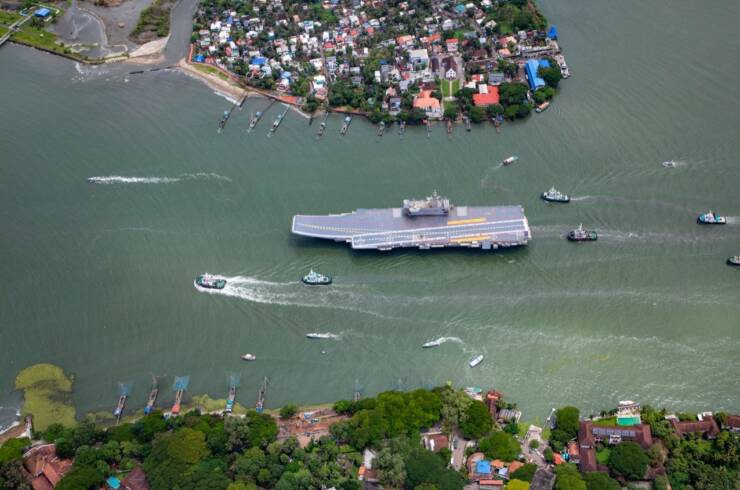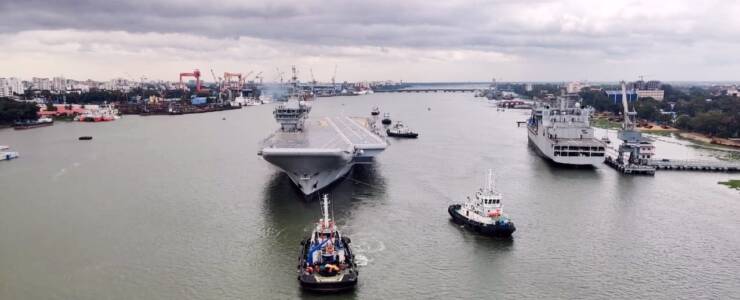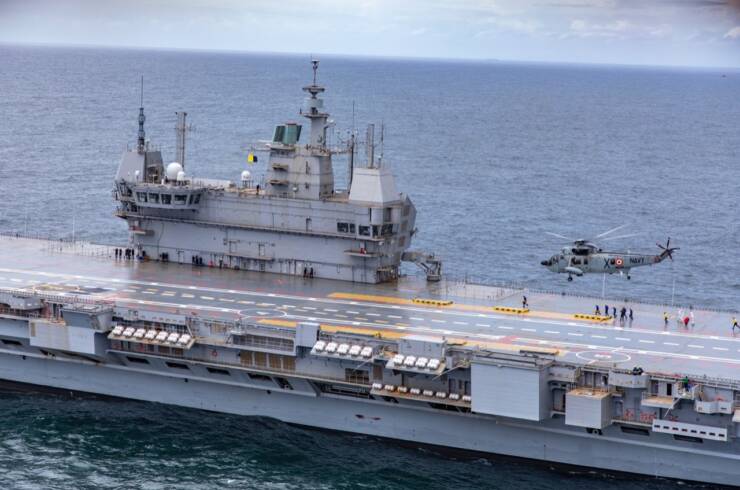
New Delhi: The sea trials of the reincarnated Vikrant (IAC) commenced on August 4 as it set itself on sails, in the 50th year of her illustrious predecessor’s key role in victory in the 1971 war.
It’s a proud & historic day for India as IAC Vikrant is the largest & most complex warship ever to be designed & built in India. With the building of Indigenous Aircraft Carrier (IAC), India joins select group of nations having niche capability to indigenously design, build & integrate a state of art Aircraft Carrier and moves ahead in its quest for Atmanirbhar Bharat & Make in India initiative.
Indigenous Aircraft Carrier (IAC) ‘Vikrant’ designed by Indian Navy’s Directorate of Naval Design(DND) is being built at Cochin Shipyard Limited(CSL), a Public Sector Shipyard under Ministry of Shipping(MoS). IAC is a leading example of the nation’s quest for “AtmaNirbhar Bharat” with more than 76% indigenous content. This is the maiden attempt of the Indian Navy and Cochin Shipyard to indigenously design and build an Aircraft Carrier.
The Indigenous Aircraft Carrier is 262 m long, 62 m at the widest part and height of 59 m including the superstructure. There are 14 decks in all, including five in the superstructure. The ship has over 2,300 compartments, designed for a crew of around 1700 people, including specialised cabins to accommodate women officers. The ship has been designed with a very high degree of automation for machinery operation, ship navigation and survivability, ‘Vikrant’ has a top speed of around 28 knots and cruising speed of 18 knots with an endurance of about 7,500 nautical miles.The ship can accommodate an assortment of fixed wing and rotary aircraft.

Most of the ship construction activities have been completed and the ship has entered the trials phase. Readiness of ship’s Propulsion and Power Generation equipment/ systems was tested in harbour as part of Basin Trials in November 2020.
Though the commencement of Sea Trials was delayed due to the 2nd wave of COVID, with concentrated and dedicated efforts of large number of workmen, OEMs, engineers, overseers, inspectors, designers and the ship’s crew, who had put their heart and soul towards the ship’s readiness for sea trials.
This is a major milestone activity and historical event. Reaching this milestone is significant as they have been achieved barring the current pandemic challenges and imponderables. During the maiden sailing, ship’s performance, including hull, main propulsion, PGD and auxiliary equipmentwould be closely watched.

With the delivery of IAC, India would join a select group of nations with the capability to indigenously design and build an Aircraft Carrier, which will be a real testimony to the ‘Make in India’ thrust of the Indian Government.
The Indigenous construction of Aircraft Carrier has led to growth in indigenous design and construction capabilities besides development of large number of ancillary industries, with employment opportunities for 2000 CSL personnel and about 12000 employees in ancillary industries. Over 76% indigenous content towards procurement of equipment, besides work by CSL and their subcontractors is being directly invested back into the Indian economy. Around 550 Indian firms including about 100 MSMEs are registered with CSL, who are providing various services for construction of IAC.
Indian Navy’s ship building programme is rightly poised to provide requisite ‘Economic Stimulus’, with 44 ships and submarine on order being built indigenously.









